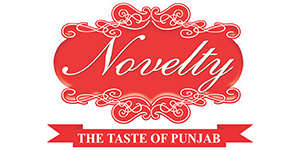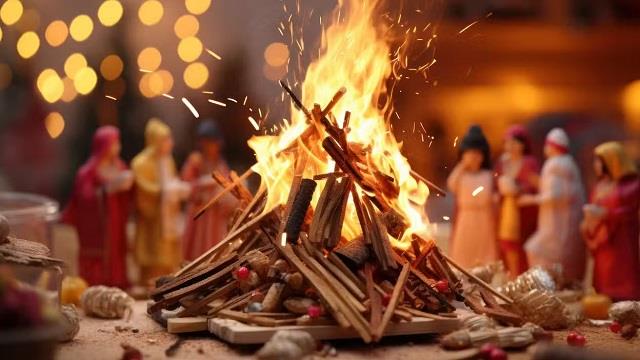Lohri, the vibrant harvest festival of Punjab, is one of the most widely celebrated festivals in India, particularly in the northern states. It marks the end of the winter season and the arrival of the harvest season. This joyous occasion is known for its lively traditions, bonfires, and delicious food, especially the novelty sweets that are unique to the festival. In Amritsar, a city that epitomizes the heart of Punjab, Lohri celebrations come alive with cultural fervor and mouthwatering sweets that capture the essence of the region's rich culinary heritage.
Here we will explore how Lohri is celebrated in Amritsar, focusing on the distinct and traditional sweets that make this festival even more special. Whether you are in Amritsar during the festival or planning to join in the celebrations from afar, this guide will take you through the best Lohri sweets and where to find them.

Understanding Lohri Festival: A Cultural Overview
Lohri marks the end of winter and the beginning of the harvest season, with particular significance to farmers who rejoice in the new crop of sugarcane, wheat, and barley. Traditionally, Lohri is celebrated on the 13th of January each year, and the festival is characterized by folk dances such as Bhangra and Gidda, singing traditional songs, and lighting bonfires to honor the fire god. The festival is an expression of gratitude for the harvest and a celebration of new beginnings.
In Amritsar, a city that thrives on its cultural traditions, the significance of Lohri extends beyond the bonfires. The festival also provides an opportunity to indulge in Punjab’s delectable sweets that are synonymous with this joyous occasion. These sweets are crafted with ingredients that reflect the richness of the region’s agricultural produce, and they are an essential part of the festival’s culinary celebrations.
The Role of Sweets in Lohri Celebrations
Sweets are an integral part of any Indian festival, and Lohri is no exception. During the festival, a variety of novelty sweets are prepared and exchanged among families, friends, and neighbors. These sweets not only add to the celebratory mood but also symbolize prosperity, good fortune, and the sweetness of life. In Amritsar, the distinct flavors of Punjabi sweets are elevated during Lohri, using ingredients like jaggery (gur), sesame seeds (til), and sugarcane – all of which are closely linked to the festival’s agricultural themes.
Must-Try Lohri Sweets in Amritsar
1. Tilgul (Sesame Seed and Jaggery Ladoo)
One of the most iconic sweets enjoyed during Lohri in Amritsar is Tilgul, made from sesame seeds and jaggery. This simple yet delicious sweet is loaded with nutrients, and it’s believed to bring good health and prosperity. The sesame seeds are roasted, mixed with melted jaggery, and rolled into small, round balls. The sweetness of the jaggery pairs beautifully with the nutty flavor of the sesame, making it a favorite during Lohri celebrations.
In Amritsar, many local sweet shops specialize in making Tilgul during the festival season. It's customary to exchange these sweets with friends and family as a token of goodwill.
2. Gajak (Sesame and Jaggery Fudge)
Another treat that graces the tables of Amritsar homes during Lohri is Gajak. Made from sesame seeds and jaggery, Gajak is a brittle, crunchy fudge-like sweet. The process of making Gajak involves melting jaggery and mixing it with roasted sesame seeds, which are then spread into a thin layer and cut into bite-sized pieces. The combination of crispy texture and the deep sweetness of jaggery makes Gajak a must-have during Lohri.
This sweet has deep cultural roots in Punjab and is a staple not only during Lohri but also throughout the winter season.
3. Rewari (Crispy Caramelized Sugar Sweets)
Rewari is another traditional sweet that is commonly found during Lohri celebrations in Amritsar. Made by mixing sesame seeds with caramelized sugar, Rewari has a hard, crunchy texture that makes it highly addictive. It is similar to Gajak but has a distinct flavor due to the use of sugar and ghee.
Rewari is typically prepared in large quantities during Lohri and is often shared with neighbors and friends. Its rich, caramel flavor makes it a delightful treat for all ages.
4. Peanut Chikki
Peanut Chikki, like Gajak, is a popular sweet enjoyed during Lohri. Made with roasted peanuts and jaggery, this crunchy sweet is rich in flavor and has a satisfying texture. The peanuts give the chikki a delightful nutty taste, while the jaggery adds a deep sweetness. It’s a light and energizing sweet that fits perfectly with the spirit of Lohri, offering a taste of both tradition and warmth.
5. Patasha (Sugar Crystals)
Patasha is a sweet that has been enjoyed in Punjab for centuries. During Lohri, Amritsar’s streets are lined with vendors selling Patasha. These are crystalline sugar sweets that are made by boiling sugar syrup and allowing it to harden into small, delicate pieces. Patasha is a fun and unique sweet, often served during special ceremonies and celebrations.
The light sweetness and satisfying crunch of Patasha make it a refreshing treat during the cold winter days of Lohri.
6. Makki di Roti and Sarson da Saag
While not a sweet in the traditional sense, Makki di Roti (cornflatbread) served with Sarson da Saag (mustard greens) is an iconic Punjabi dish often enjoyed during Lohri celebrations. The savory, earthy flavors of this dish complement the sweetness of traditional Lohri sweets, making it a quintessential part of the festival’s feast in Amritsar.
Conclusion
Lohri in Amritsar is not just a festival; it’s an experience that touches all senses, from the crackling sound of the bonfire to the taste of traditional Punjabi sweets. These novelty sweets, such as Tilgul, Gajak, and Rewari, are an essential part of the celebrations, offering a delicious taste of the region’s rich culinary heritage. Whether you are in Amritsar during the festival or looking to try these treats from afar, the experience of Lohri sweets brings warmth, joy, and prosperity to all.

